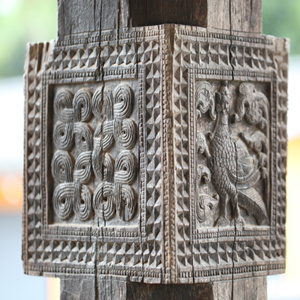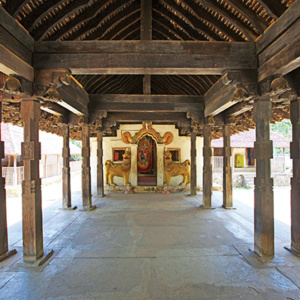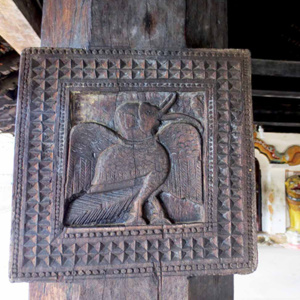

embekke-devalaya
embekke-devalaya-srilanka
In bygone days Sri Lanka was a hub for intricately turned out woodcarving with beautifully designs cut out from wood. The patience and knowledge of the people of this particular era is evidence when you visit Embekke Devalaya. This Devalaya is situated in the Kandy District, the area of Udunuwara.
Tourists who wish to travel to Embekke Devalaya could reach this point from Pilimitalawa or it could be reached from the Peradeniya to Mampitiya Dawulugala Road. If you are travelling by train you need to board the Colombo Badulla train and disembark at the Gelioya Railway Station. Embekke Devalaya is four miles from the Gelioya Railway station. You will not miss it due to the fact that the village has still retained its historical features.
The Embekke Devalaya was built by King Vickramabahu III of the Gampola Eara (AD 1357 – 1374). Devatha Bandara a local deity is worshipped at this Devalaya. The shrine is home to three sections, namely Sanctum of Garagaha, the Dancing Hall or the Digge and the Hevisi Mandapaya, or better known as the Drummers Hall. The Drummers Hall is a haven of beauty in woodcarving. The ornate pillars and high roof is a beauty to behold one’s eyes. The patience of the workers at that time is evident as there is not one part of the woodcarving that is out of place. Lengend says that some of the wood work used in the Drummers Hall was brought from the Royal Audience Hall situated in Gampola.
If you wish to witness the best in Sinhalese Art this is the place you need to visit. It is evident that these woodcarvings have been nurtured by the Kings of the bygone era. The roof has a unique feature where visitors will see the rafters all slant in one direction and that is towards the entering visitors and these rafters are kept secure by the “Madol Kurupawa.” This depicts a huge pin that is not found in any part of Sri Lanka.


